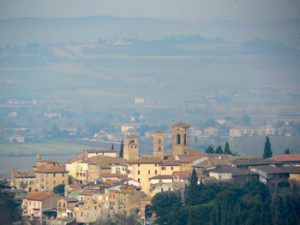Umbria
 Umbria is a landlocked region of Central Italy southeast of Tuscany. It’s known as La Verde Umbria for its heavily forested hills and mountains and its extensively cultivated valleys. The region is home to some of the most picturesque, well-preserved medieval towns in Italy, including Perugia, Gubbio, Todi, Spoleto, Orvieto, and Assisi.
Umbria is a landlocked region of Central Italy southeast of Tuscany. It’s known as La Verde Umbria for its heavily forested hills and mountains and its extensively cultivated valleys. The region is home to some of the most picturesque, well-preserved medieval towns in Italy, including Perugia, Gubbio, Todi, Spoleto, Orvieto, and Assisi.
The Upper Tiber Valley cuts the region in half. The eastern half has been populated since around 1000 BC, originally by the Umbrian Tribes, from whom the region gets its name. The Etruscans have populated the western part since the 9th century BC. Perugia, the region’s capital today, was one of the twelve powerful Etruscan city-states. With the expansion of the Roman conquest, both Etruscans and Umbrians were given full Roman citizenship, and the region thrived for centuries.
Umbria suffered under less benign invaders with the fall of the Roman Empire, like the Ostrogoths and the Byzantines. The local population retreated to fortified hill towns, such as Gubbio, Todi, and Spoleto. During the Dark Ages, the political power gap was filled by the Lombard Duchy of Spoleto, which dominated the area from the 6th to the 13th century when Umbria became part of the Papal States and remained so until the unification of Italy of 1861.

